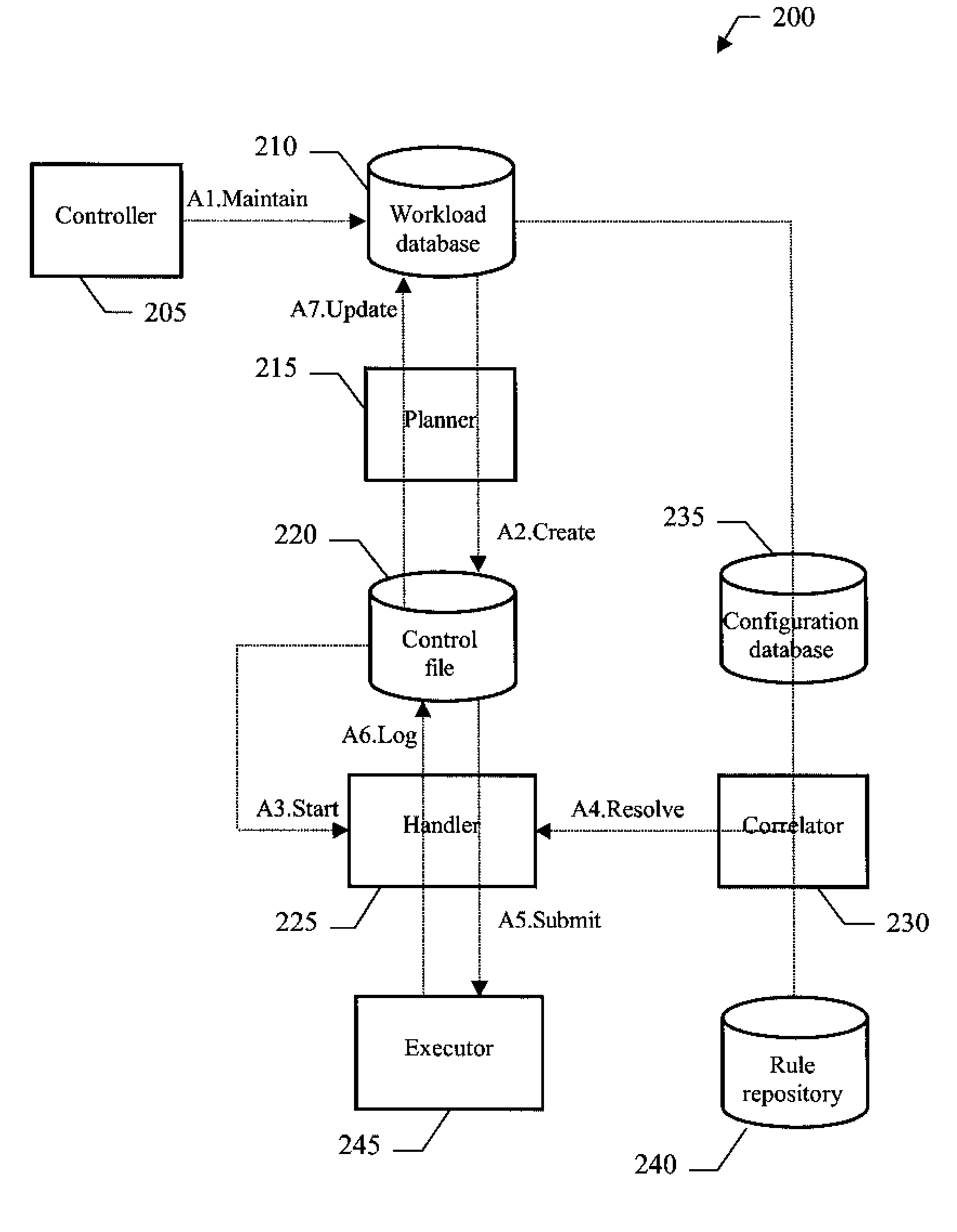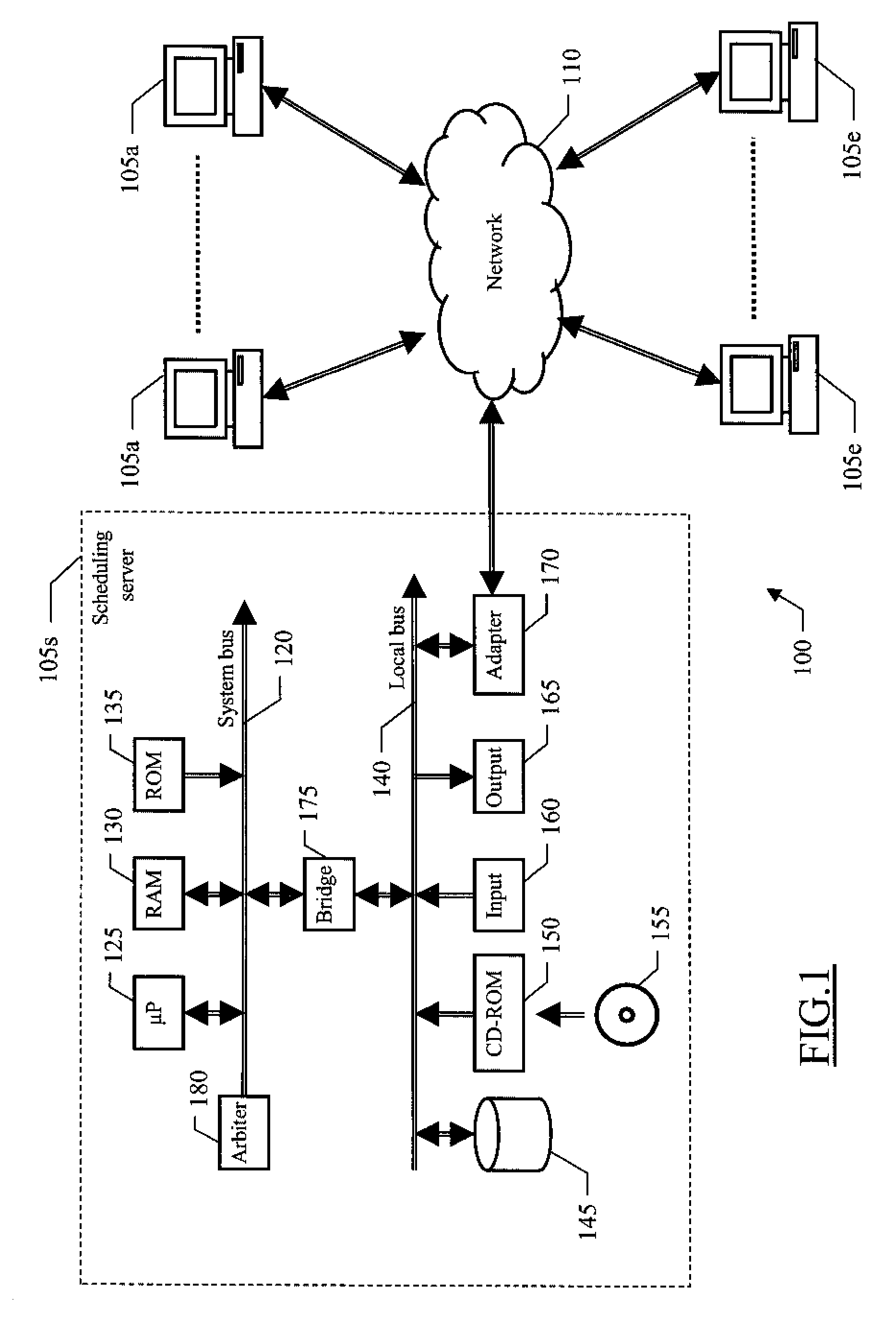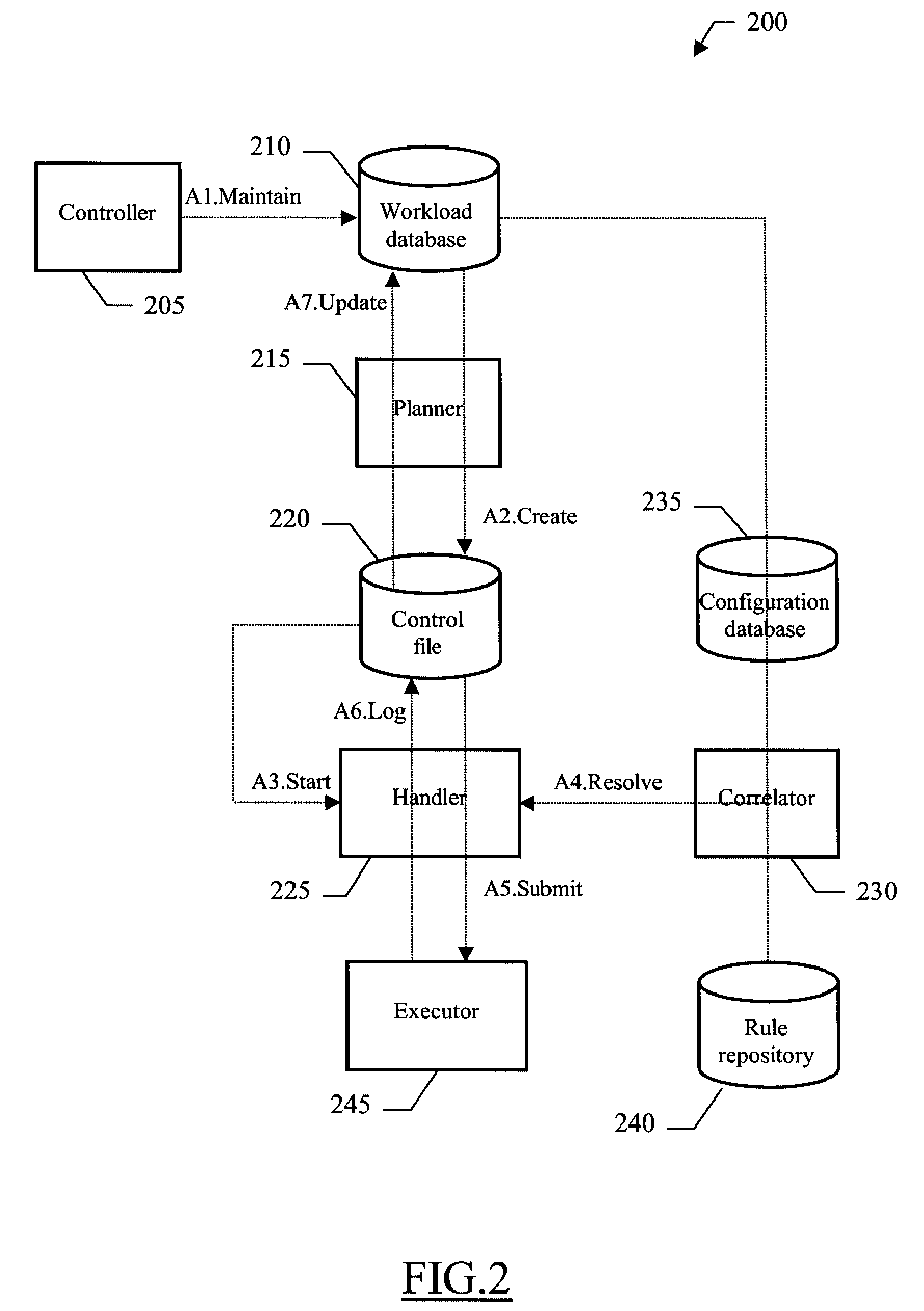Method, system and computer program for translating resource relationship requirements for jobs into queries on a relational database
a technology of relational database and resource relationship, applied in the field of information technology, can solve the problems of consuming a lot of time, and affecting the performance of the scheduler, and the above-described iterative method is very time-consuming
- Summary
- Abstract
- Description
- Claims
- Application Information
AI Technical Summary
Benefits of technology
Problems solved by technology
Method used
Image
Examples
Embodiment Construction
[0029]With reference in particular to FIG. 1, a data processing system 100 with distributed architecture is illustrated. The system 100 includes a plurality of server computers (or simply servers).
[0030]More specifically, one of the servers operates as a scheduling server (denoted with 105s). The scheduling server 105s is used to automate, monitor and control the execution of work units from a central point of the system 100; typically, the work units consist of non-interactive jobs (for example, payroll programs, cost analysis applications, and the like). The jobs are executed on a set of servers operating as execution servers (denoted with 105e). The other servers operate as auxiliary servers (denoted with 105a), which implement additional services that may be used by the execution servers 105s; for example, the auxiliary servers 105s are database servers (controlling one or more databases), application servers (running one or more software applications), and the like.
[0031]The se...
PUM
 Login to View More
Login to View More Abstract
Description
Claims
Application Information
 Login to View More
Login to View More - R&D
- Intellectual Property
- Life Sciences
- Materials
- Tech Scout
- Unparalleled Data Quality
- Higher Quality Content
- 60% Fewer Hallucinations
Browse by: Latest US Patents, China's latest patents, Technical Efficacy Thesaurus, Application Domain, Technology Topic, Popular Technical Reports.
© 2025 PatSnap. All rights reserved.Legal|Privacy policy|Modern Slavery Act Transparency Statement|Sitemap|About US| Contact US: help@patsnap.com



